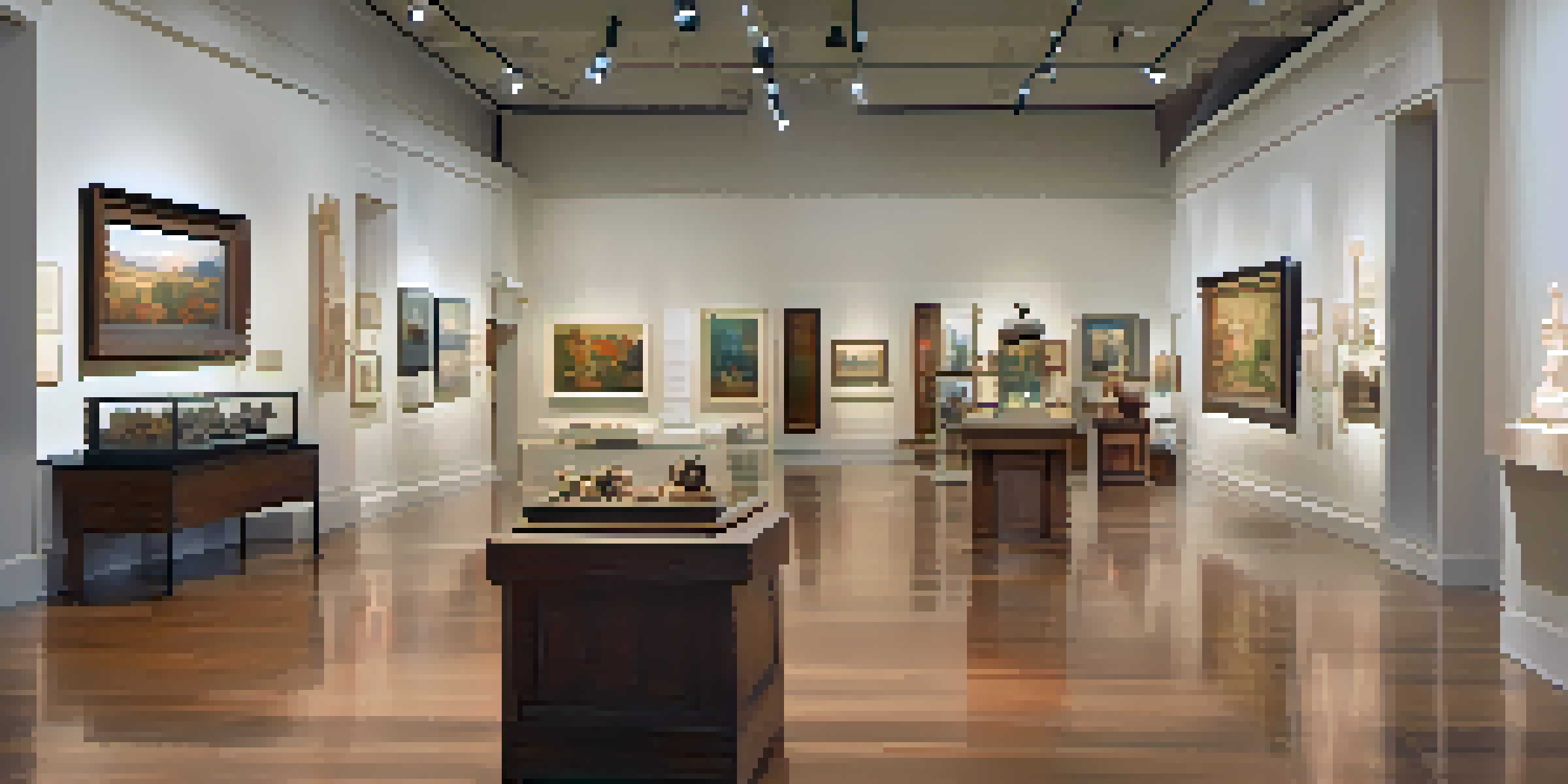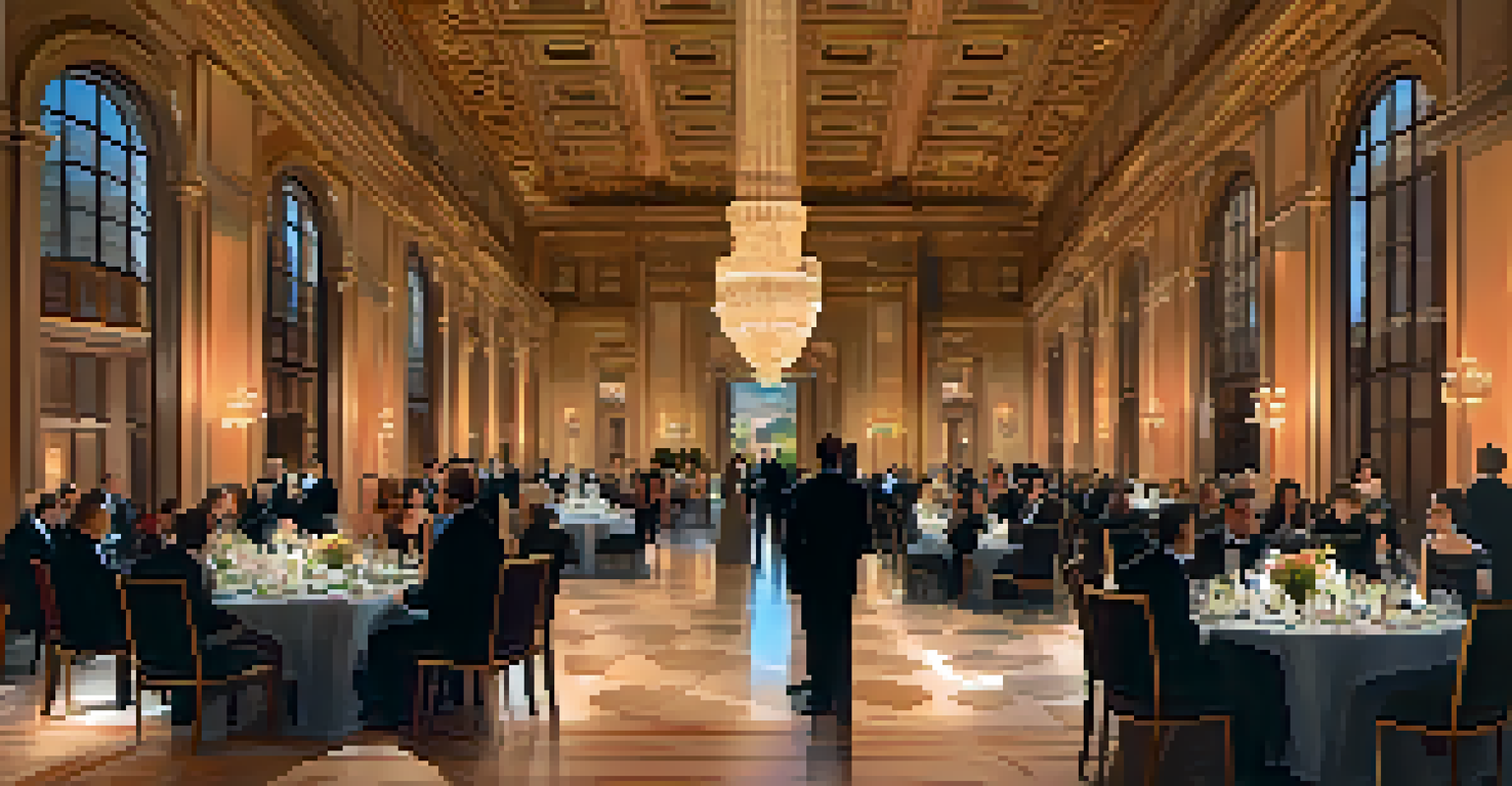The Evolution of Museums: From Cultural Heritage to Luxury

The Origins of Museums: Collecting Cultural Heritage
Museums have their roots in the private collections of wealthy individuals, where artifacts and art pieces were showcased. These early collections served as a way to preserve cultural heritage and educate the public. Over time, the concept evolved, leading to the establishment of public institutions dedicated to the exhibition of art and history.
Museums are not just places to house artifacts; they are places to engage with our shared humanity.
In the Renaissance period, the idea of a museum began to take shape, with institutions in Europe showcasing collections that highlighted human achievement and creativity. This shift marked a significant change in how societies viewed culture, emphasizing the importance of preserving and sharing knowledge with the public.
As cities grew and industrialization took hold, museums became accessible to a broader audience, signaling a shift toward democratizing art and culture. This accessibility paved the way for museums to emerge not just as places of preservation but as community spaces for learning and engagement.
The 19th Century: Museums as Public Spaces for All
During the 19th century, the museum landscape expanded dramatically, with institutions like the British Museum and the Louvre opening their doors to the public. This era marked a significant push towards making museums accessible to everyone, regardless of social status. Governments and civic leaders recognized the role of museums in fostering national pride and identity.

The establishment of museums during this time also emphasized the importance of education, with many institutions offering guided tours and educational programs. This focus on learning helped to solidify museums as vital cultural institutions, bridging the gap between art and the public's understanding of it.
Museums Evolve from Private to Public
Originally private collections, museums transformed into public institutions aimed at preserving and sharing cultural heritage.
Moreover, the 19th century saw the birth of specialized museums, dedicated to specific themes like natural history and science. This diversification allowed for the exploration of various aspects of culture and knowledge, further enriching the public's experience.
The 20th Century: Museums Embrace Modernity and Innovation
As the 20th century rolled in, museums began to embrace modernity, incorporating new technologies and interactive displays to engage visitors. This shift brought about a more dynamic approach to exhibitions, moving away from static displays to immersive experiences. Museums started to think beyond mere preservation and began focusing on storytelling.
A museum is a place where one should be able to appreciate the past while engaging with the present.
The introduction of multimedia elements, such as audio guides and video presentations, helped create a more engaging atmosphere for visitors. This innovation allowed museums to cater to diverse audiences by appealing to different learning styles and preferences.
Furthermore, the rise of contemporary art challenged traditional museum narratives, pushing institutions to adapt their exhibitions and collections. This evolution led to a broader representation of voices and perspectives, enriching the cultural tapestry that museums aimed to present.
The Role of Museums in Cultural Preservation Today
In an increasingly globalized world, museums play a crucial role in preserving cultural heritage and identity. They actively engage in efforts to document and protect artifacts that represent diverse cultures and histories. This responsibility extends beyond mere display, as museums work to educate visitors about the significance of these collections.
Today, many museums collaborate with communities and indigenous groups to ensure that their stories are told authentically and respectfully. This partnership fosters a sense of ownership and pride in cultural heritage, creating a more inclusive narrative within the museum space.
Luxury Experiences vs. Accessibility
The trend toward luxury offerings in museums raises concerns about accessibility, prompting a need for balance between exclusivity and inclusivity.
Additionally, museums are implementing digital initiatives, such as online collections and virtual tours, to reach wider audiences. This shift not only helps in preserving cultural artifacts but also makes them accessible to people who may not have the opportunity to visit in person.
From Educational Institutions to Luxury Experiences
In recent years, there has been a noticeable shift in how some museums position themselves. Many have begun to embrace a more luxurious experience, offering exclusive events, private tours, and high-end dining options. This transformation raises questions about the accessibility of cultural heritage amidst the allure of luxury.
While luxury experiences can enhance visitor engagement, they can also create a divide, making museums feel less accessible to the average person. Critics argue that this trend risks turning cultural institutions into elitist spaces, further alienating those who cannot afford these experiences.
However, some museums are finding a balance, offering a range of experiences that cater to different audiences. By blending luxury with inclusivity, they can create environments where everyone feels welcome while still providing exceptional offerings for those seeking a premium experience.
The Impact of Social Media on Museum Engagement
The rise of social media has transformed how museums connect with their audiences. Platforms like Instagram, Twitter, and TikTok allow museums to share their collections and engage with visitors in real-time. This digital presence not only helps attract younger audiences but also encourages them to participate in the museum experience.
Museums are now leveraging user-generated content, inviting visitors to share their experiences and perspectives online. This interaction fosters a sense of community and belonging, as people feel more connected to the stories behind the exhibits they visit.
Social Media Enhances Engagement
Social media has revolutionized museum engagement, allowing for real-time connections and community building through user-generated content.
Moreover, social media campaigns can enhance the visibility of exhibitions and events, driving physical attendance. By blending the digital and physical realms, museums can create an engaging experience that resonates with today’s tech-savvy visitors.
The Future of Museums: Balancing Heritage and Luxury
As we look to the future, museums face the challenge of balancing their roles as guardians of cultural heritage with the trend toward luxury experiences. Striking this balance will require innovation, creativity, and a commitment to inclusivity. Museums must continue to evolve while remaining true to their mission of preserving and sharing culture.
The integration of technology will play a vital role in this evolution, enabling museums to create interactive and immersive experiences that appeal to a broad audience. By embracing change, museums can attract new visitors while ensuring that traditional values are not lost.

Ultimately, the future of museums will depend on their ability to engage with diverse communities and adapt to the ever-changing landscape of culture and society. By prioritizing accessibility and meaningful engagement, museums can remain relevant and vital institutions for generations to come.